Tips and Insights for Choosing
the Perfect Player Device!
Have you ever considered the possibilities of displaying dynamic menus in your restaurant, providing information to patients in a clinic waiting room, or boosting motivation among office staff? Digital signage could be the solution you’re looking for. At its core, digital signage encompasses the technology and process of distributing information across a network of TV screens, aimed at engaging, informing, or entertaining a specific audience.
Understanding Media Player Devices for Digital Signage
A digital signage player device is a standalone hardware designed to display digital content, ranging from advertisements to digital menu boards. It serves as an effective tool for engaging customers and disseminating information in public spaces, making it a versatile solution for businesses looking to enhance their visual communication strategy.
A wide variety of media player devices are available, including traditional or ruggedized computers powered by Windows and Linux, HDMI dongles/sticks, and set-top boxes (STBs). This range of options provides businesses with the flexibility to select the device that best fits their specific requirements and deployment scenarios for digital signage.
A player device connects to a display through an HDMI cable and operates using a player app. This app, tailored for the media player device and its operating system, is responsible for displaying content on the screen. It connects to the Content Management System (CMS) over an IP network to retrieve content and schedules, and it also sends back data for real-time monitoring, ensuring seamless content management and operational efficiency.
The digital signage player device is the most critical part of any signage solution.
Benefits of using a player device vs. SmartTV
Separating the screen from the player device offers a greater flexibility
Using a player device allows for hardware standardization, as digital signage deployment often consists of screens of different sizes, attributes, brands and models. In case of screen failure, replacing a media player can be done in a few minutes, without the need to dismantle and replace the screen. After a few years of use, upgrading a player device while retaining the existing screen is very simple.
Smart TVs come as an alternative with their built-in digital signage capabilities, allowing them to display content through a player apps on the TV. Navori produces such app for Samsung, LG, Philips and Sony.
Remote Management
Many player devices come with management capabilities, allowing remote control, operating upgrades including vulnerability fixes. For instance, Navori CMS features automated maintenance operations. The operator can adjust settings and perform various interventions without the need to travel to the site.
Get a smoother Content Playback
Higher performance ensures smoother playback of media content, including videos, animations, and interactive elements. This leads to a better viewer experience without lag or stuttering. External media players often offer higher performance capabilities compared to SoC solutions, especially in terms of processing power, graphics performance, and memory.
Support for High-Resolution Content
Advanced player devices are designed to support high-resolution content seamlessly, enabling the showcasing of sharp, detailed images and videos on large screens or displays with high pixel densities. This capability ensures that viewers receive the highest quality visual experience, with vibrant colors and clear text, enhancing the overall impact of your digital signage.
Benefit from advanced interactive features
Higher performance opens up possibilities for implementing advanced features and interactivity in digital signage applications, such as touchscreens, gesture recognition, augmented reality, and real-time data integration.
Designed for AI – Visual sensors
Some player devices like StiX 3800 or Windows PC incorporate AI components. A camera is positioned on top of the screen and connected to the device, analyzing audience activity around the screen. Navori App counts footfall or vehicles, measures wait times before service for digital menu boards, or by calculating the angle of the audience’s eyes relative to the screen to produce engagement per content. This audience detection also allows Navori App to turn off the screen whenever no one is within view, saving hardware life time and electric power. Programming adjustments based on situations detected by the camera is also supported by Navori.
Future-Proofing
Investing in a player device with better performance can future-proof the digital signage setup, allowing it to accommodate more demanding content requirements and software updates over time without needing frequent hardware upgrades.
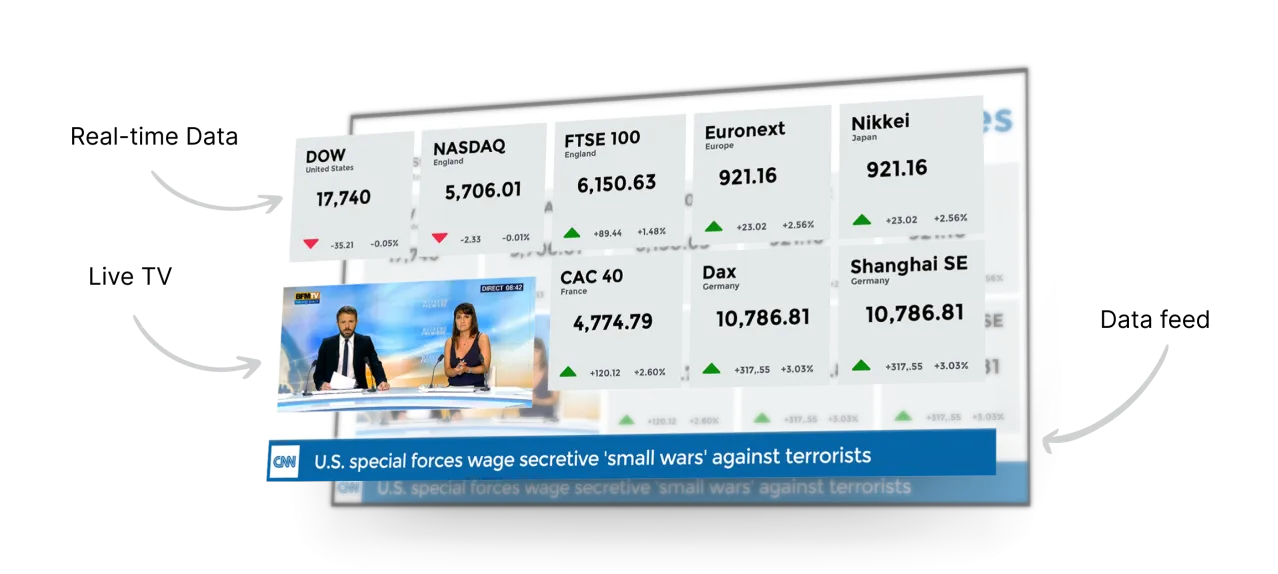
What are the most popular types of digital signage players devices?
A player device encompass its processing power for efficient content rendering and playback, coupled with robust graphics capabilities to ensure smooth display of multimedia content. Memory capacity is crucial to store and process content, while versatile connectivity options facilitate seamless integration with displays. Its operating system is crucial while reliability, scalability, security, and energy efficiency are essential considerations. Additionally, specialized functionalities like AI analytics or audience measurement further enhance the device’s suitability for tailored digital signage applications.
Commercial players devices
These digital signage players are designed for use in commercial environments, such as retail stores or restaurants. They typically offer a higher level of durability and functionality than consumer-grade digital signage players. Industrial Windows PC, BrightSign players and Navori StiX belong to this category, delivering a MTBF the expected life time before the first failure greater then 30.000 hours. For outdoor use, industrial Windows PCs with IP certifications related to the type of use are recommended.
Consumer player devices
his category includes “consumer” products. They offer the same features as the commercial player devices category, but have a shorter lifespan, typically a few thousand hours. They come in the form of boxes or USB dongles. Prices are advantageous, but in the long run, maintenance costs will be higher.
Network players
These players are used with a This type of digital signage player typically offers more features and capabilities than a standalone player but can be more difficult to set up and manage.
Which Operating Systems are most commonly used to empower player devices?
Windows and Android Powered player devices allow Navori to offer native player apps. The other platforms use a web player. A native player in digital signage, benefits from optimized performance and seamless integration with specific operating systems and hardware, thus providing smooth and efficient content playback. It can leverage advanced features of the operating system, ensuring increased stability and reliability.
Windows – Native player app
Microsoft Windows is widely used in the digital signage industry due to its familiarity, versatility, and compatibility with a wide range of software applications. Windows-based player devices offer robust performance, extensive hardware support, and compatibility with popular digital signage software solutions.
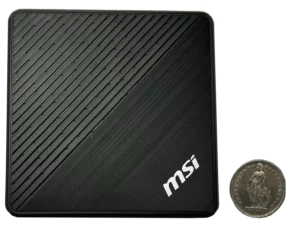
Android – Native player app
The Android operating system has gained popularity in recent years for digital signage deployments, especially for small to medium-sized installations. Android-based player devices offer affordability, flexibility, and compatibility with a vast ecosystem of apps and services. They are commonly used for interactive kiosks, menu boards, and small-scale signage applications.
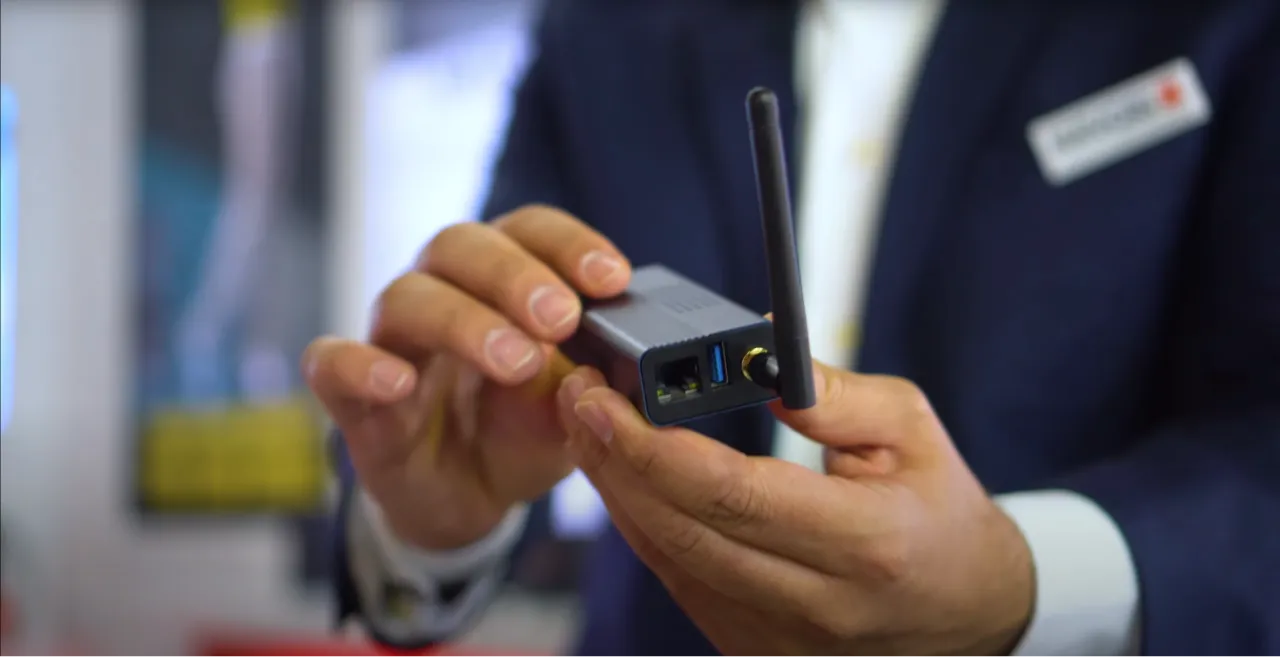
ChromeOS – web player
Developed by Google, Chrome OS is a cloud-centric operating system designed primarily for Digital Signage Chromebox devices. Chrome OS-based player devices offer simplicity, security, and seamless integration with Google services. They are commonly used in education, corporate, and small business settings.
Linux – web player
Linux-based player devices are popular among users looking for open-source solutions, customization options, and cost-effectiveness. Linux offers stability, security, and a lightweight footprint, making it suitable for embedded systems and low-power devices. It is often used in industrial-grade player devices and custom-built solutions.
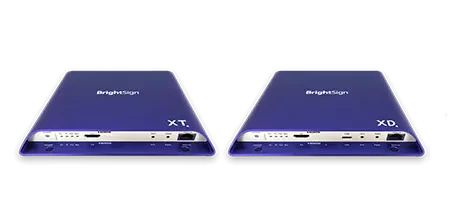
Identify at a glance the limitations of each player device
The best media player varies depending on needs such as performance, features, supported content types, or use cases. By selecting a brand and model of player device, you can choose the best player device for you. When in doubt, choose hardware belonging to the Commercial Media Player Device category like StiX 3700, as these models are the most powerful and can truly handle any level of sophistication required.
| Media Type and Related Features | Availability – Attribute |
|---|
Whenever a feature or media is not supported by hardware, Navori Player seamlessly skips the content, and issues an alert to users in charge.
Selecting a Player Device to Sync Content Across Multiple Screens
Multi-head Windows PC player device
It’s the simplest configuration. Navori App IPR edition is capable of playing all types of content with professional quality up to 8k resolution, which is 7160*4320 pixels, meaning 4 screens of 4K or 16 screens in full HD resolution.
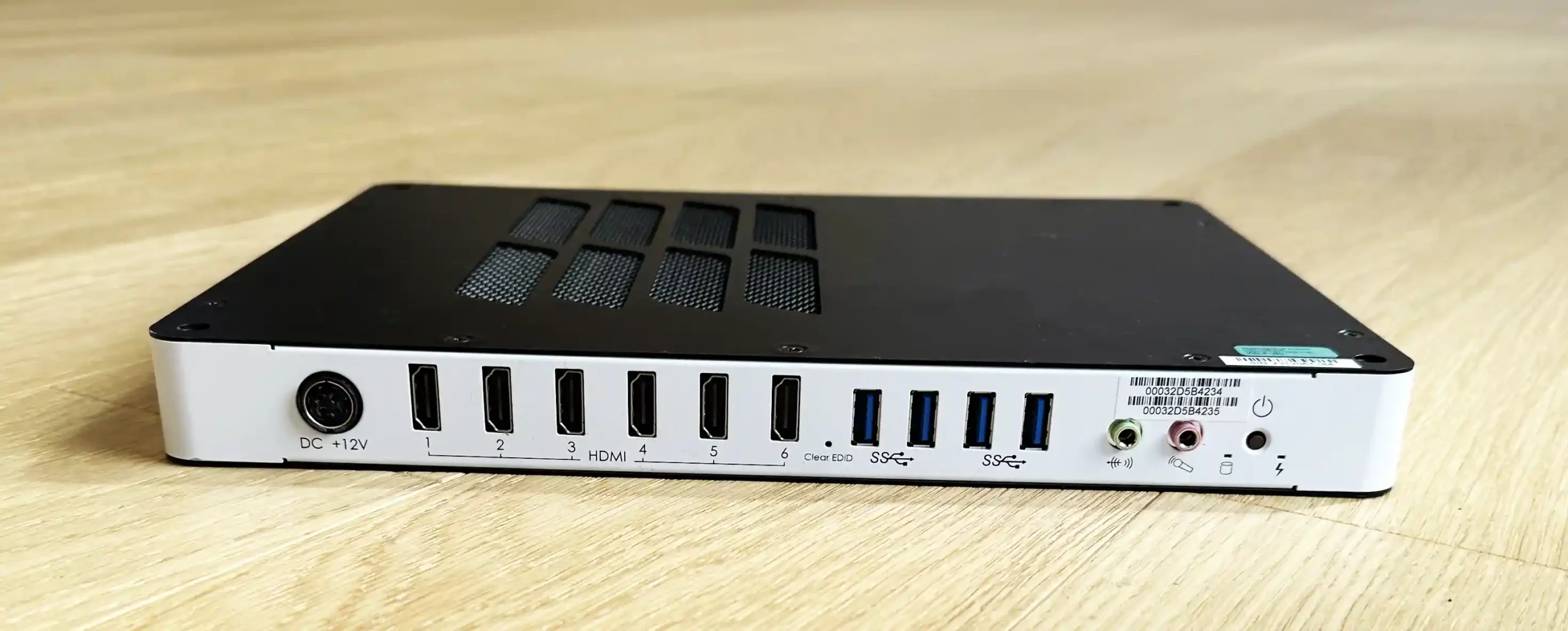
Synchronized player device, one per screen
Your content is divided by screens. The App player is responsible for synchronizing the displayed content. The advantage of this hardware configuration is, for example, in the case of a digital menu board, where in the event of a malfunction, the other screens continue to operate.
Navori player Apps are capable of operating in both of these synchronization modes, or in hybrid mode, running both simultaneously.
Conclusions
Digital signage players are key components of any digital signage system. They connect your digital signage software to the hardware, allowing you to manage and fix content issues through your content management system (CMS). With a variety of digital signage players available, selecting the right one for your needs is essential.
Navori offers a specific professional player app for each type, brand and model of player device available on the market
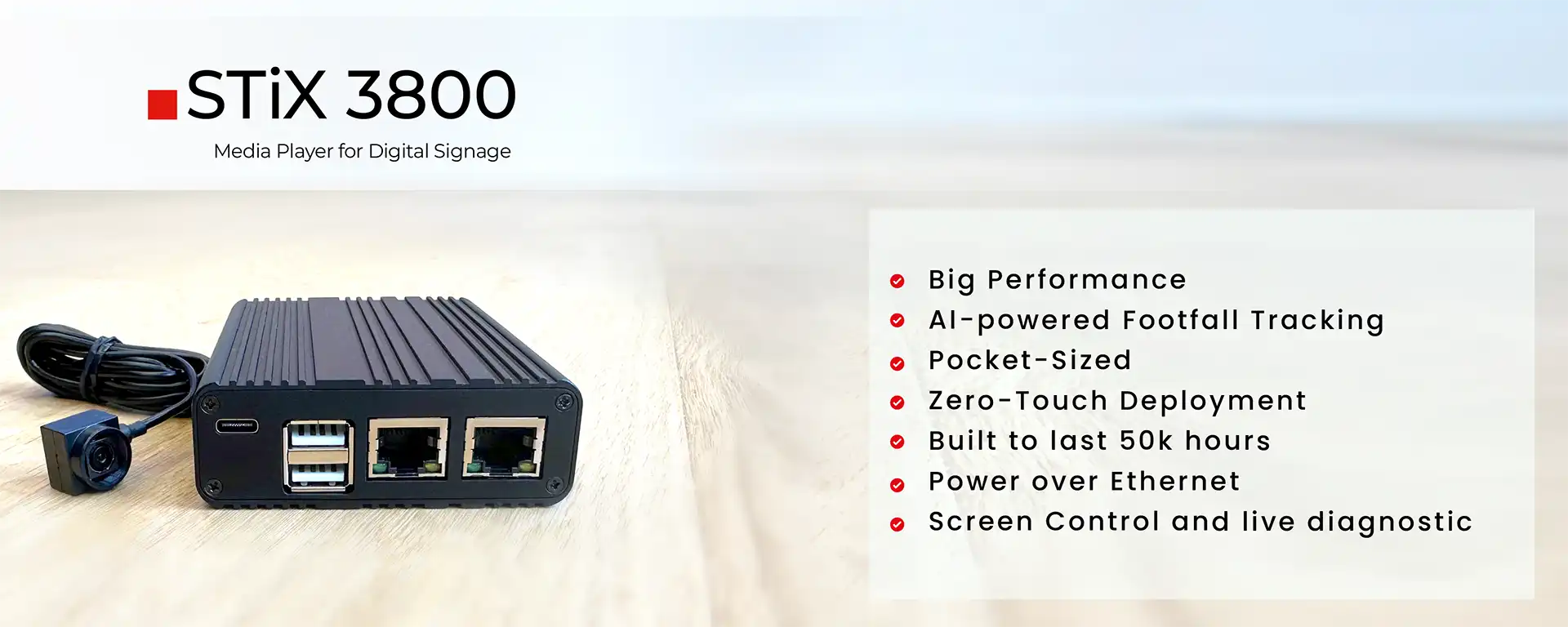
 Copy link
Copy link